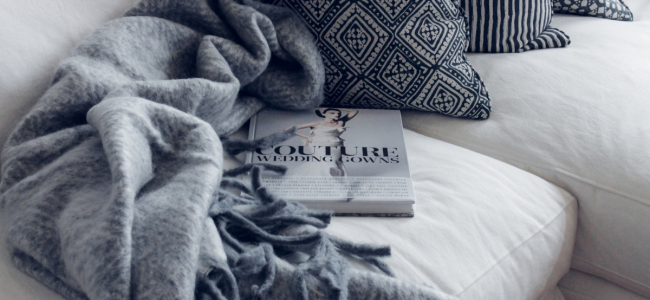

Leather sofas are a luxury item that many people invest in to add elegance to their homes. However, over time, leather sofas can develop a problem known as “puddling.” This is when the leather stretches and sags, creating a dip in the seat cushions. Puddling can be unsightly and uncomfortable but don’t worry, we have a comprehensive guide to help you fix it like a pro.
Before we dive into the steps to fix puddling on your leather sofa, let’s first understand what causes this issue. Puddling can happen due to several reasons, such as the leather’s natural aging process, heavy usage, or improper cleaning and conditioning. Additionally, the leather’s quality and thickness can also affect how prone it is to puddling. By knowing the causes of puddling, you can take preventative measures to avoid it in the future.
Now, let’s move on to the steps to fix puddling on your leather sofa:
Clean the Leather
The first step to fixing any leather-related issue is to clean it thoroughly. You can use a leather cleaner specifically designed for your sofa or create a DIY cleaner by mixing equal parts of water and white vinegar. Gently rub the cleaner onto the leather in circular motions using a soft-bristled brush or cloth. This step will remove any dirt, grime, or oils that may have accumulated on the surface.
Assess the Damage
Once the leather is clean and dry, you can assess the extent of the damage caused by puddling. Check the affected areas for any tears or scratches that may have occurred due to the stretching and sagging. If you find any significant damage, it’s best to consult a professional leather repair service. They can assess the damage and suggest the best course of action.
Apply a Leather Conditioner
After assessing the damage, apply a leather conditioner to the affected areas. A conditioner will help rejuvenate the leather and restore its natural oils, preventing further damage. Be sure to use a high-quality leather conditioner that’s suitable for your sofa’s leather type. Apply the conditioner using a soft cloth and allow it to penetrate the leather for 30 minutes to an hour.
Add Support
If the puddling on your leather sofa is minor, you can add support to the affected areas to restore their shape. One way to do this is by placing a piece of high-density foam beneath the seat cushions. You can cut the foam to the shape and size of the affected area and place it between the cushion and the sofa’s frame. This will help provide additional support and prevent further sagging.
Use a Leather Stretcher
If the puddling is severe, you may need to use a leather stretcher to restore the shape of the affected area. A leather stretcher is a tool specifically designed to stretch and shape leather. You can rent or purchase one and follow the instructions carefully to avoid damaging the leather. It’s essential to note that leather stretching is a delicate process and should only be performed by professionals if you’re unsure.
Regular Maintenance
To prevent puddling on your leather sofa in the future, it’s essential to maintain it regularly. Clean the leather every three to four months using a leather cleaner and condition it every six months. Avoid exposing your leather sofa to direct sunlight or heat sources, which can dry out the leather and cause it to crack. Also, avoid sitting on the arms or backrest of your sofa, which can weaken the leather.
Conclusion
A leather sofa is a beautiful and durable addition to any home, but it does require proper care and maintenance to keep it looking its best. By following the tips and techniques outlined in this guide, you can keep your leather sofa in top condition, and repair any damage that may occur.
Remember to clean your sofa regularly, condition it to keep it soft and supple, and take care to avoid exposing it to direct sunlight, heat sources, and moisture. And if your leather sofa does become damaged, assess the extent of the damage and choose the appropriate repair method. With the right care and attention, your leather sofa will continue to look and feel great for many years to come.
FAQs
Can I just use any cleaner lying around the house to clean my leather sofa?
No, please don’t! It might be tempting to use household cleaners to save money, but it can do more harm than good. Most household cleaners contain harsh chemicals that can damage your leather sofa. Always choose a cleaner that’s specially formulated for your sofa’s leather type.
How often should I condition my leather sofa?
Well, it depends on how often you use your sofa and the type of leather it’s made of. As a general rule, it’s a good idea to condition your leather sofa every six months to keep it soft and supple.
Can I fix a tear in my leather sofa myself?
Hmm, it depends on the extent of the damage. Minor scratches or scuffs can be fixed with a leather touch-up pen or a leather repair kit, but for more serious damage such as tears or deep scratches, it’s better to seek the help of a professional leather repair specialist.
How do I protect my leather sofa from damage?
To protect your leather sofa from damage, try to avoid exposing it to direct sunlight, heat sources, and moisture. You can use a leather protector spray to help prevent stains and spills, and always clean up any spills as soon as possible.
How do I prevent my leather sofa from cracking or drying out?
To prevent your leather sofa from cracking or drying out, make sure to condition it regularly with a good quality leather conditioner. Also, avoid exposing it to direct sunlight or heat sources, and maintain a consistent humidity level in the room where it is located.